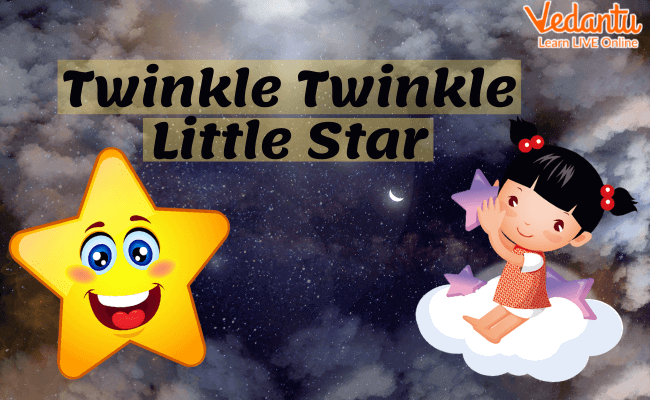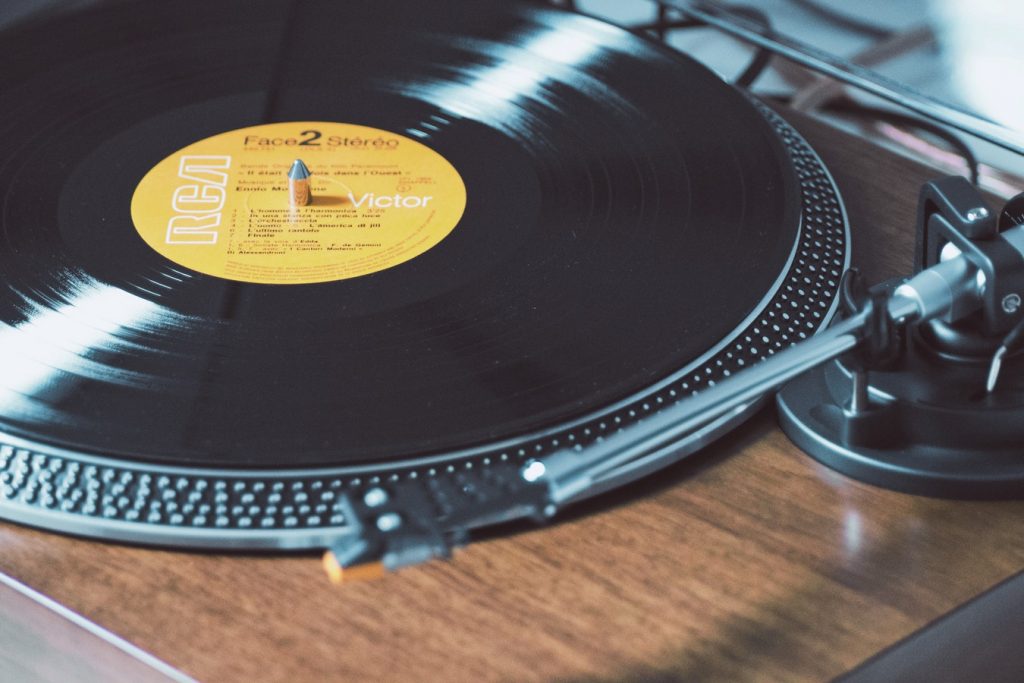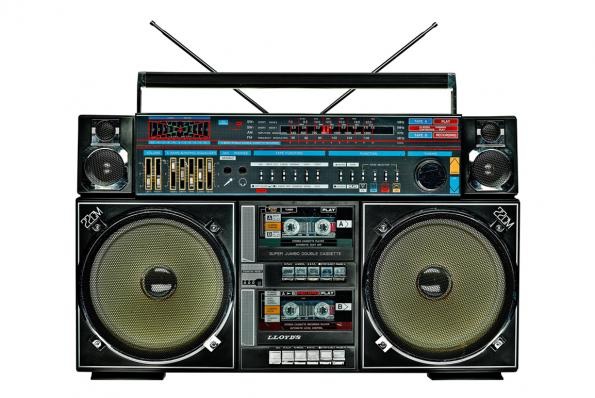Music Devices
Future pop star Dylan travels to the huge city of New York

Every week in Breakout, we speak to the rising stars who are currently dominating the music scene. Whether it be because of a massive viral event, a hot new song, or an eye-catching video, these musicians are destined to rule in the near future. On Dylan’s phone screen, a genuine triumphant image can be seen. The pop-rock vocalist, real name Natasha Woods, picks up the device and hovers it in our direction when she spots NME peering over at it. A broad, pleased smile appears on her face. A picture of the 22-year-old playing on stage at London’s Wembley Stadium with an electric guitar by her side and her head tilted back, savouring the joyful thrill of the moment, serves as her lockscreen wallpaper.
Dylan served as Ed Sheeran’s opening act during the first few weeks of the summer on his stadium tour of the entire UK, which culminated in five sold-out performances at Wembley. The support role was “a genuine dream come true” for Dylan as she performed before the largest audiences of her career to date, blending 100 mph riffs with hazy and restless production to create a portrayal of an artist keen to emphasise her variety. She explains, “When I was younger, playing at Wembley was one of my dreams. However, I’ve had to slightly reorient my goals and concentrate on eventually headlining the stadium instead. Dylan’s life in 2022 is evident by the fact that she already needs to revise her bucket list. We meet in downtown New York just hours before her maiden US headline performance at the Mercury Lounge, the same club that started the careers of influential indie artists The Strokes and The Yeah Yeah Yeahs in the early 2000s. Today, she has crossed off another objective.
Dylan performing live in New York: venues should host music of this calibre
We wind our way through the city’s Soho neighborhood’s cobblestone streets, a thriving neighbourhood of upscale shops, filled with the hot, greasy aromas of street vendors selling hotdogs and powdery-sweet waffles, while crumpled confetti rolls in the gutters outside nightclubs. Dylan is visiting New York for the first time, and while there, she indulges in main character moments by window shopping, acting as though she’s calling a yellow cab, and admiring tastefully furnished homes for her perfect future: Can you even begin to imagine the tunes I’d compose if I lived here?
We climb 12 flights of stairs to get to a bohemian-style studio that was once home to the great Patti Smith, where Dylan will record an acoustic session this afternoon, briefly interrupting our forward planning. With her platform boots emphasising the creakiness of the flooring and the oppressive midsummer heat spilling through the windows above, Dylan exclaims hurriedly, “I take back everything I said about wanting a New York flat. You’re allowed to be dramatic, you’re a true pop star now! Her manager yells up the hallway in response.
The Greatest Thing I’ll Never Learn, Dylan’s upcoming mixtape, is due on October 28. It is an eight-track collection full of feeling and fervour, led by the lead single “Girl Of Your Dreams,” which is reminiscent of Avril Lavigne’s “The Best Damn Thing”-era Avril Lavigne thanks to its adrenaline-surging melody and reverberating, blown-out production. Dylan is currently in She blends this nostalgic, all-caps rock sound with quick and effusive pop flourishes and an otherworldly confidence that few stars have at such a young age, demonstrating the diversity that defines Generation Z.
Dylan is currently progressing at breakneck speed; after years of self-doubt, she is an artist finding her footing. She was raised in Suffolk, where she spent her high school years pursuing success by enrolling in extracurricular vocal, guitar, and piano lessons. However, after releasing two early EPs of somewhat hesitant, electronica-influenced pop, 2019,’s ‘Purple’ and its follow-up, ‘Red,’ she was left in a state of creative confusion. She admits that it has been difficult to get the remarkably confident tone heard on the new mixtape: “Previously, I was going to many of producers and was trying so hard to be everyone else.” Dylan talks about how her performance at Latitude Festival in July was a turning point for her career. She stormed the mainstage with a playlist made up completely of new songs, including songs from the polished “No Romeo” EP from February. She raises her arm to show us that, weeks later, she’s still sporting her artist wristbands from the event, proving that the enthusiastic audience response she received at Latitude has clearly lingered with her.
Hairspray, tequila, and last-minute jitters hang in the air at the location as showtime draws near. By filming herself playing about during soundcheck and inviting her bandmates to join in for a TikTok upload, Dylan tries to calm her nerves. Fans outside, meantime, swarm around the corner of the street with gifts for their favourite artists—flowers, American candy, or a ring engraved with the words “No Romeo”—while leaping from foot to foot in anticipation of a meet and greet. Notably, two young ladies are sporting t-shirts that read “I Love Making Boys Cry”; they relate this lighthearted reference to Dylan’s own honesty in her singing. According to 17-year-old Isabella, “Dylan talks to the teenage girl experience in her songs.” She treats us [her followers] with candour and warmth, as if she were a friend.
After the show, Dylan spends an hour in the rain posing for pictures, signing dollar notes, and demonstrating his grounded nature. After roaming around for thirty minutes, we finally leave the commotion behind and make our way to the Lower East Side of the city when a voice suddenly yells, “Dylan! Your presentation was fantastic,” a bystander exclaims. Keep up the excellent work! Dylan is filled with a sense of surprise and thanks. She tells NME, “You asked me earlier if I’ve got my ‘I’ve made it’ moment yet. Well, that was when it occurred.
Music
Understanding the Charm of “Twinkle Twinkle Little Star”

Twinkle Twinkle Little Star undoubtedly one of the most well-known lullabies in the world, “TwinkleTwinkle Littl Star” has been lulling generations of listeners and capturing their hearts.
History of the Lullaby
Undoubtedly one of the most well-known lullabies in the world, “Twinkle Twinkle Little Star” has been lulling generations of listeners and capturing their hearts. This beautiful tune has reached across time and cultural .aEarly 19th-century French song “Ah! vous dirai-je, maman” by Mozart is where “Twinkle got its start. It’s a song that’s been around since then. This well-known song’s evolution into the beloved lullaby we appreciate today illustrates a complex history that has changed according to different cultural influences and musical modifications.
Exploring the Melody: Musical Notations of “Twinkle Twinkle Littl Star”
Popular Variations and Interpretations of the Song
Many musicians and artists have contributed their artistic vision to “Twinkle Twinkle LittleStar” throughout the years. These modifications have enhanced the song’s adaptability and its capacity to connect with listeners of various musical tastes..
Influence on Pop Culture and Children’s Education
“Twinkle Twinkle Little Star” has become more than just a lullaby thanks to its appearances in a variety of children’s books, television shows. Its involvement in early childhood education exemplifies how important it is for promoting young brains’ cognitive and creative growth.
Analyzing the Timeless Appeal of “Twinkle Twinkle Little Star”
The song “Twinkle Twinkle” LittleStar” has a timeless allure because to its entrancing melody, restful rhythm, and cozy lyrics that arouse feelings of warmth and nostalgia. Its capacity to stir feelings and instill tranquillity has cemented its reputation among people all across the world.
Learning and Playing “Twinkle Twinkle Little Star” on Different Instruments
“Twinkle Twinkle Little Star” serves as an introductory piece for people learning to play a variety of musical instruments, including pianos, flutes, guitars, and ukuleles. Its simple structure and recognized tune make it an essential component of music instruction, igniting a love of music in students of all ages.
Importance of “Twinkle Twinkle Little Star” in Early Childhood Development
Early exposure to music, particularly through charming tunes like “Twinkle Twinkle Little Star,” is essential for enhancing cognitive development and promoting emotional well-being in young children. The lullaby’s calming tones and rhythmic pattern help young toddlers develop their memory, linguistic skills, and ability to communicate their emotions.
Appreciating the Global Reach and Adaptation of the Song
“Twinkle Twinkle LittleStar” has a worldwide appeal that has allowed it to cross national boundaries and linguistic barriers and win over the hearts of people from all walks of life. Its flexibility to be adapted to many linguistic and musical genres emphasizes its cross-cultural relevance .
Conclusion
With its enduring tune and sweet lyrics, ” has continued to amaze generations, serving happiness, and musical initiation for both kids and adults. Its capacity to cross boundaries significance as a treasured component of the world’s musical history.
Frequently Asked Questions About “TwinkleTwinkle’ Little Star”
-
Q1.Is “TwinkleTwinkleLittle Star” a traditional nursery rhyme?
” It is true that the nursery rhyme “TwinkleTwinkle Little Star” has a long history that dates back to the 18th century.
- Q2.Who composed the melody of “TwinkleTwinkle Star”?
- Wolfgang Amadeus Mozart, a well-known composer, is credited with creating the tune for “Twinkle Twinkle LittleStar.”
- Q3.What makes “TwinklTwinkle Little Star” an ideal choice for beginners in music?
- It is the perfect place to start for anyone learning to musical instruments because to its straightfor repeated pattern familiarity.
- Q4.How has “TwinkleTwinkle Little Star” influenced popular culture?
- A cultural staple, the lullaby has been used into a variety of media, including children’s novels, television shows,educational program.
- Q5.Why is exposure to music like “TwinkleTwinkle LittleStar” crucial in early childhood development?
- Young children’s , linguistic, and emotional development are aided by music, particularly well-known and calming tunes like Twinkl Twinkle Little Star.”
Music Devices
Old Music Devices

Nowadays, we have smartphones with music applications and software that allow us to listen to music anytime, anywhere. We also have several music devices specialized for music such MP3 player, Ipod…With those technologies, everything seems so easy and convenient. However, have you ever wonder how our seniors listen to their music before any things like phones and music players are born? You will be wow when you get to know those cool old music devices.
Victrola
Victrola is a phonograph which is invented in 1877 with ability of mechanical recording and reproduction of sound. The machine is produced by Victor Talking Machine Company with the ideal of phonograph that looks like a piece of furniture rather than a sound machine. After the Victrola was introduced in August, 1906, it was immediately become a hit which encouraged the company to release many sizes and designs of cabinets with the price range vary from small tabletop models with $15 up to $600 for Chippendale and Queen Anne-style cabinets of fine wood with gold trim.
The original Victrola design had many faults in which the most problematic is deep cabinet. The music devices required to reach down into the cabinets to change the record by lifting the needle. However, the problem was soon recognized and fixed by manufacturer. The new model used a domed which contained turntable and tone arm sitting nearly the top of the cabinet. New design model was only produced only few thousands which made them valuable to collector nowadays. In present, victrolas is famous decoration furniture which can bring luxury and ancient feel to the house.
Table Radio Player
Table radio player is a small, self-contained radio receiver that were widely used during 1900s. Back then, radio was the common music device in house and music was played from radio programs during the day. Most of table radio player is limited by functions even some had compact discs or audio cassette players and clock audio functions. Later model may have CD functionality which allows the devices to play CD in the table radio. The device can be run on battery power and portable for its small size.
Nowadays, due to the growth and innovation in technology, table radio player is not widely used as before and preferred as a furniture rather than music devices. There are not many CD or cassettes for people to play on table radio. The limited function is also one of reasons why people switch to modern radio with dials and multi-function built in. However, for some, dials are so much cooler than buttons and the device can bring back all the good memory in the past when everyone gathered around to listen to their favorite radio programs.
8 Track Tape Player
Before CD was invented and the technology innovation for Internet with mp3 file, tape was the most famous music container over the world. 8-track tape, also known as Stereo 8 or eight-track cartridge, is a magnetic tape sound-recording technology that was popular in mid-1960 to late 1970s. The device was created by a consortium led by Bill Lear in 1964. The invention was belonged to Lear Jet Corporation. The 8-track device was innovation from 4-track cartridge.
The device reached its peak of popularity during the booming automobile industry. The 8 track tape player was preferred by its convenience and portability. However, with cassette taking over the industry with many innovation in functions and designs, eight-track cartridge became less common in homes and vehicles in the late 1970s.
Boom Box
The boom box is still cool music device up to now. The bigger the boom box is, the cooler the owner seems. Carrying a giant good-looking boom box on the shoulder is one of sign of coolness in the 80s. The boom box is a common transistorized cassette tape recorder/player and AM/FM radio. With the birth of discs, some models have CD player instead of cassette player in the old model. The boom box is loved because it has an amplifier with one or two loud speakers and a carrying handle to carry the boom box around.
Designed for portability, boom boxes can be run on batteries as well as by line current. The size of boom box dependeds on how loud and heavy bass the device can provide. The biggest can reach the size of a suitcase. With its function, boom box has closely related with urban society and has become one of icons in American hip hop culture. Until now, you can see boom box in the hip hop or B-boy/break dance video.
With the booming of MP3 players and smartphone where people can listen to any songs they want on Internet, the popularity of boom box is rapidly declined. In order to adapt with the growth of technology, some models have included connections for MP3 and digital formats using USB connector or Bluetooth.
Walkman
It is a big mistake if Walkman is not on the list. This famous portable audio cassette/tape players in the late 1970s. The product is one of pioneers in changing music listening habit by allowing people to carry recorded music and listen to their favorite songs anytime anywhere they feel like through lightweight headphones. The music device is famous and loved over the world for the new experience.
In present, the music device is developed into many models in order to fit in the growth of digital platform. However, with many people, Walkman using cassette is represented for their youth.
Music Devices
Music Device History

In 21st century, listening to Music Device History is getting easier and easier with many modern and high-tech devices. The development of audio technology now allows us to listen to any songs we like with just a smart phone. Saying goodbye to the time that we have to write down the lyrics and look for the songs among radio and compact discs. Now, with just many applications and software, just by one click and we will know the name of the song is playing. With such an amazing help from technology, have you ever wonder how long it takes for us to get here? When was the first music device invented? This article will answer those questions by get you through the timeline of music device development.
Where All the Stories Began
The very first music device was Music Device History was made in Jan, 1811. It is an automatic musical instrument that produces sound by placing pins on a revolving cylinder or disc. The original music box was tiny container that can fit into a waistcoat pocket. In 1815, the very first factory that produced music boxes was opened. The industry quickly expanded to many countries including Germany and US. From a tiny music box, this music device then was developed into giant designs and many other variations. And at the end of 19th century, music box was rapidly replaced by player piano. Nowadays, there are still music box manufactures around the world but mostly for decoration purpose.
1850s to 1900s
After the birth of music box, in 1857, phonautograph was invented by Edouard-Leon Scott de Martinville. The device is known as the earliest device that could record sound. Phonautograph transcribed sound waves as undulations using a traced line on smoke-blacken paper or glass. Not long after the invention of phonautograph, 1870s, phonautogram was defined as device can provide records that contain enough information about the sound in theory. However, with the insubstantial two-dimensional line, physical playback could not work until computer technology recreated the records in 2008.
In 1876, the piano player was invented and one year later, in 1877, the first phonograph was created by Thomas Edison. The invention soon made massive change in the music and audio industry. The device was mechanical recording and reproduction of sound using the vibration waveforms. The machine then was improved by Alexander Graham Bell who is the first patterned for a practical telephone that change the way human communication.
After the significant change from phonograph, in 1889, the first jukebox was introduced. The invention was an innovation from phonograph which involved rubber tubes and was activated by coin in each tubes. Back then, the device was incorporated with other devices until inventors implemented on this automated music-playing device.
During 1900s
20th century has witnessed huge changes in the Music Device History and sound industry as many significant inventions were born and set the foundation for many innovations later. The first invention in 20th century was radio station in Nov, 1920. KDKA was the very first commercially licensed radio station over the world. The station can operated on clear channel and broadcast. As the radio station was available, the radio industry was booming for radio products such as rec.
Not until 1964 had eight-track player and tape been invented. It was a magnetic tape sound-recording technology. The invention was innovation from four-track cartridge. The stereo 8 was then introduced under Lear Jet Corporation and was a massive hit in the sound and audio industry. After that, with the corporation with automobile industry, 8-track players started to be installed in cars which then were available in many cars and trucks through the early 1980s.
However, the era of 8-track did not last for long with the introduction of cassette in 1971. The invention then changed the entire music industry by allowing record dictation for high-quality music playback. Many music production then switched to cassette and the production line started to expand with many products and innovations.
Five year later, the first boom box was patterned. It was a portable transistorized cassette tape recorder or player with AM/FM radio. The design composed of two or more loudspeakers, an amplifier, radio tuner and cassette player. The louder and heavier bass will require bigger design. This music device soon became an icon in urban society and closely linked to American hip-hop culture.
The music industry then experienced another change with the invention of Walkman which is a portable cassette player through headphones. The device soon became a favorite music player by teenagers and music fans.
Another big change in 20th century was the introduction of compact disc or CD in May, 1982. The invention was the result of digital technology which allowed higher music quality than cassette. The circle thin shape can contain more songs than cassette and not very soon until the CD era had took over the world. Not for music, along with computer and electronic innovations, VCD was born. The invention then changed the direction of music industry as many music player manufacturers started to release CD-player products including boombox and Walkman.
In the late 20th century, finally the MP3 was invented. With the help of computer science and Internet, we finally can download music from online website, setting another platform for music industry besides physical sales. Music devices then had another ultimate shift from CD to digital music and the era of digital was just beginning.
In the Beginning of 21st Century up to Now
21st century started with the first portable media player in 2002. Many innovations came after and Ipod generation began to boom. The product is a pioneer in using touch sensitive controls to scroll down the playlists. The Music Device History industry was remarkably changed with smaller MP3 player, media playback and yes, touch screen. The music devices and players are getting smaller with many applications and functions built in. Smartphone comes along and changes the game of music industry for its music functions. In 2010, we finally had to say goodbye to Walkman – an icon of music player in 80s after the dominance of CDs and MP3. With the fast changing environment, we will continue to witness more amazing creations and innovation in music device industry in near future.


